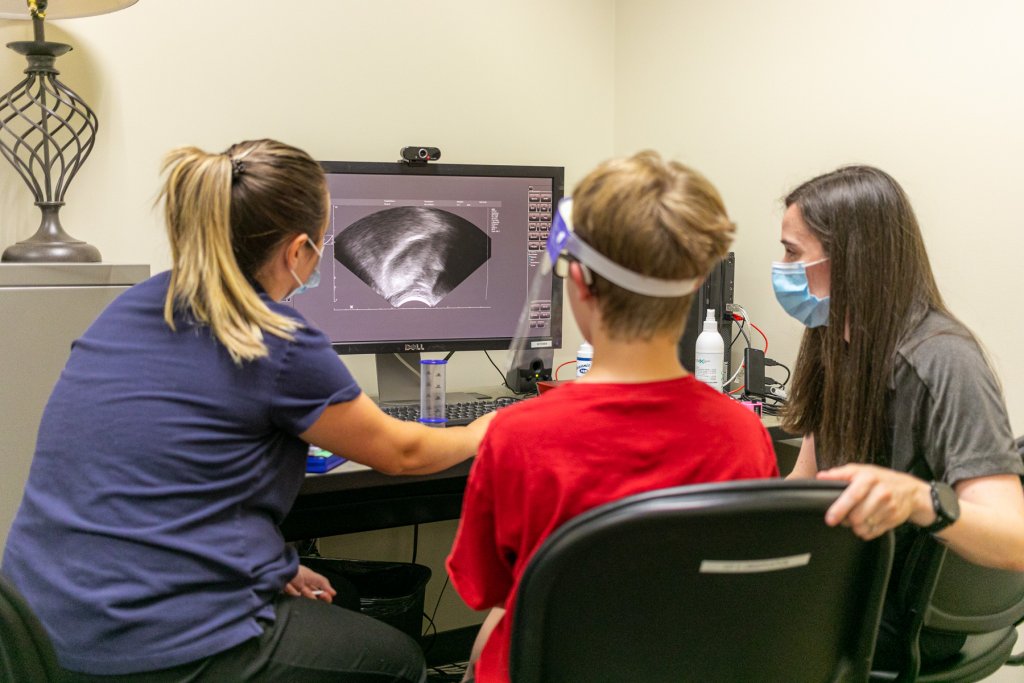EWU faculty at the University Speech and Hearing Clinic in Spokane are using innovative ultrasound methods to address some of the most problematic obstacles for children with speech disorders – among them the pronunciation of “R” sounds.
According to Hashemi Hosseinabad, PhD, an assistant professor in EWU’s Department of Communication Sciences and Disorders, up to two percent of people who reach adulthood have speech disorders that affect their ability to pronounce certain sounds. One of the most common and hard-to-fix speech errors, she says, is that difficult “R” sound.

Conventional speech therapy involves using a mirror to teach young patients the sounds produced by the lips like “P” and “B.” Because this method often fails to help with more tongue-twisty consonants, therapists such as Hosseinabad are increasingly turning to alternatives such as visual feedback therapy – a treatment technique involving ultrasound.
“For more challenging sounds like ‘R’ or ‘S’ that children cannot see inside their mouth, we use real-time biofeedback that enables them to visualize inside their mouth,” says Hosseinabad. “Ultrasound imaging for speech therapy offers real-time views of the tongue during speech that teaches children to produce correct tongue shapes for complex sounds.”
Hosseinabad recently wrapped up a two week intensive speech therapy “R-Camp” utilizing the ultrasound technology at the clinic, which is run collaboratively by EWU and WSU in the Health Sciences Building on the Riverpoint Campus.
It was open to children six and older who had not made any progress with traditional therapy, and Hosseinabad says early evaluations show participants demonstrated significant gains in producing the “R” sound.
Read about the clinic’s tremendous success in the July 7 edition of the Spokesman-Review.

